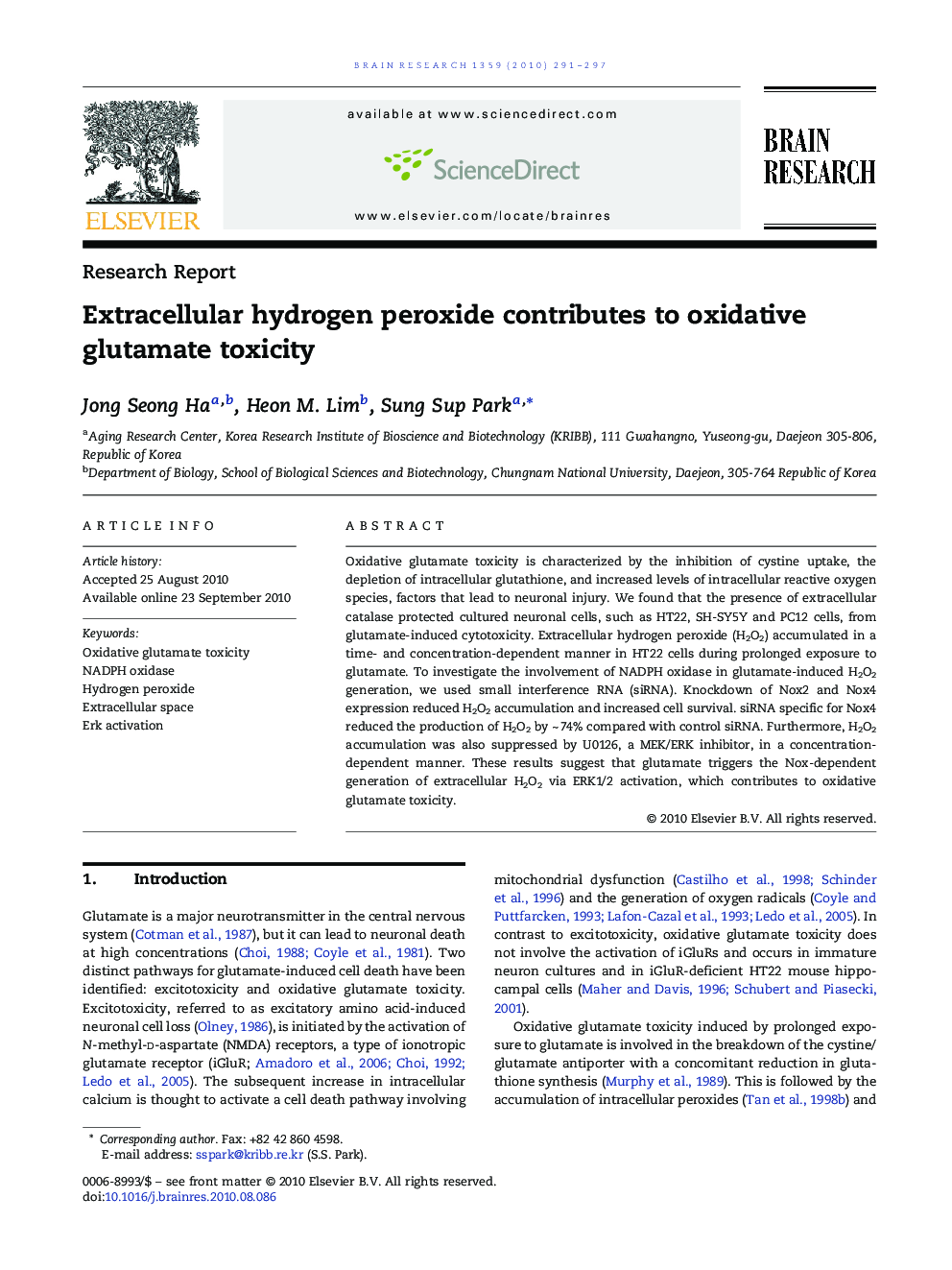| Article ID | Journal | Published Year | Pages | File Type |
|---|---|---|---|---|
| 4326475 | Brain Research | 2010 | 7 Pages |
Oxidative glutamate toxicity is characterized by the inhibition of cystine uptake, the depletion of intracellular glutathione, and increased levels of intracellular reactive oxygen species, factors that lead to neuronal injury. We found that the presence of extracellular catalase protected cultured neuronal cells, such as HT22, SH-SY5Y and PC12 cells, from glutamate-induced cytotoxicity. Extracellular hydrogen peroxide (H2O2) accumulated in a time- and concentration-dependent manner in HT22 cells during prolonged exposure to glutamate. To investigate the involvement of NADPH oxidase in glutamate-induced H2O2 generation, we used small interference RNA (siRNA). Knockdown of Nox2 and Nox4 expression reduced H2O2 accumulation and increased cell survival. siRNA specific for Nox4 reduced the production of H2O2 by ~ 74% compared with control siRNA. Furthermore, H2O2 accumulation was also suppressed by U0126, a MEK/ERK inhibitor, in a concentration-dependent manner. These results suggest that glutamate triggers the Nox-dependent generation of extracellular H2O2 via ERK1/2 activation, which contributes to oxidative glutamate toxicity.
Research Highlights►Prolonged glutamate exposure. ►Erk activation. ►NADPH oxidase activation. ►Extracellular H2O2 generation ►Oxidative glutamate toxicity.
